And now we begin
we’ve entered a new stage in our program, where we individually bring our own themes and our own choices. I can see they are trying to create safe spaces for us to continue experimenting and making things. Someone mentioned in class that artists can spend years working on a piece, and our tutors said, yes, exactly, and we are training you right now to do just that.
To start us on this path, the most recent module was about experimenting in at least two mediums, in a topic of our own choice. I selected sculpture and print. Sculpture I like. Print because I wanted to play with print techniques already learned by classmates in their print elective. If you’re wondering why not video, yes, I do want to do video. I’ll likely pick it up in the next module.
I chose to continue the ‘small’ theme, but honestly, I just did whatever I wanted. I paid attention to what I am drawn to, and brought that in. As they say to us, find the joy. And so all those dried flowers or plants I’ve kept, or the times I’ve wanted to collect the battered bark fibers in the cycling lane (every time I cycle), I see you.
And so yes, I donned a plastic glove, walked down the hill to that stretch of cycling lane that is never swept, that has been collecting branches for months. These branches have been pounded by wheels, such that the bark resembles hair. I picked them up and filled a bag. It took over 10 bucket rinses before the water stopped looking so muddy.
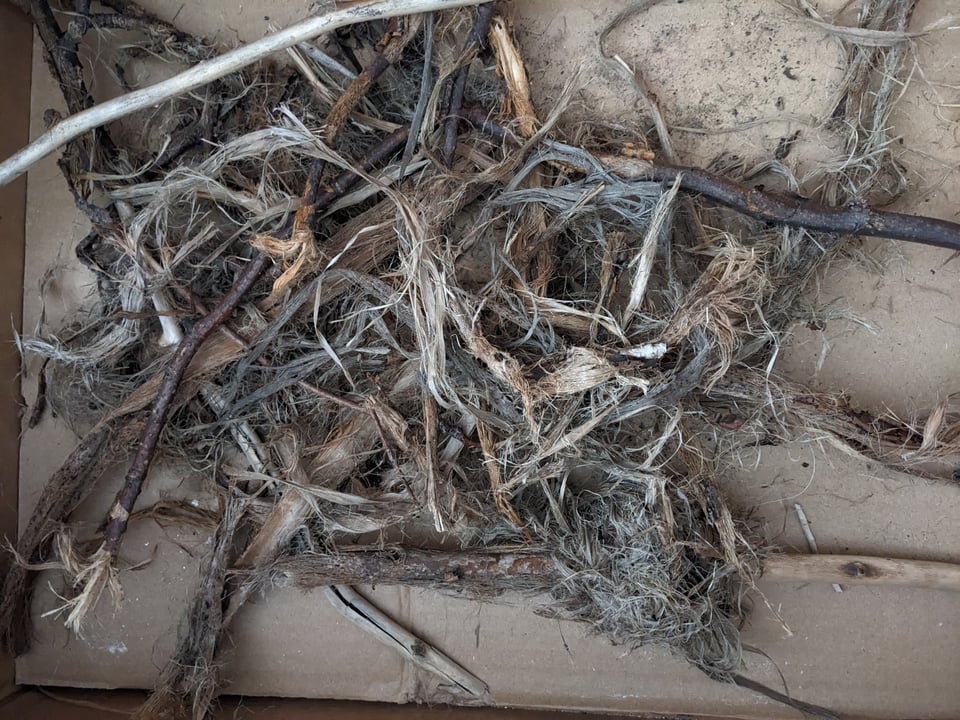
Do the most obvious thing, so I made monoprints with the bark fibers. That was ok, but the piece I liked the most didn’t have anything to do with bark fibers, it was just ink and a spoon tracing shapes. Why a spoon? I’d heard that printing was possible using a spoon. The beautiful effects from print are achieved with expensive equipment, namely, a press. A press has a heavy roller that can be applied with high pressure to a plate with ink and moistened paper. These are sandwiched between layers of felt that push against the paper that pushes against the plate. Without researching it more, I heard, “Spoon!*” and just tried it. *also a Tick reference.
Perhaps a spoon does the job, but it would take lots of elbow grease and meticulous pressing cover every square millimeter. This print represents blind faith, and realization of futility.
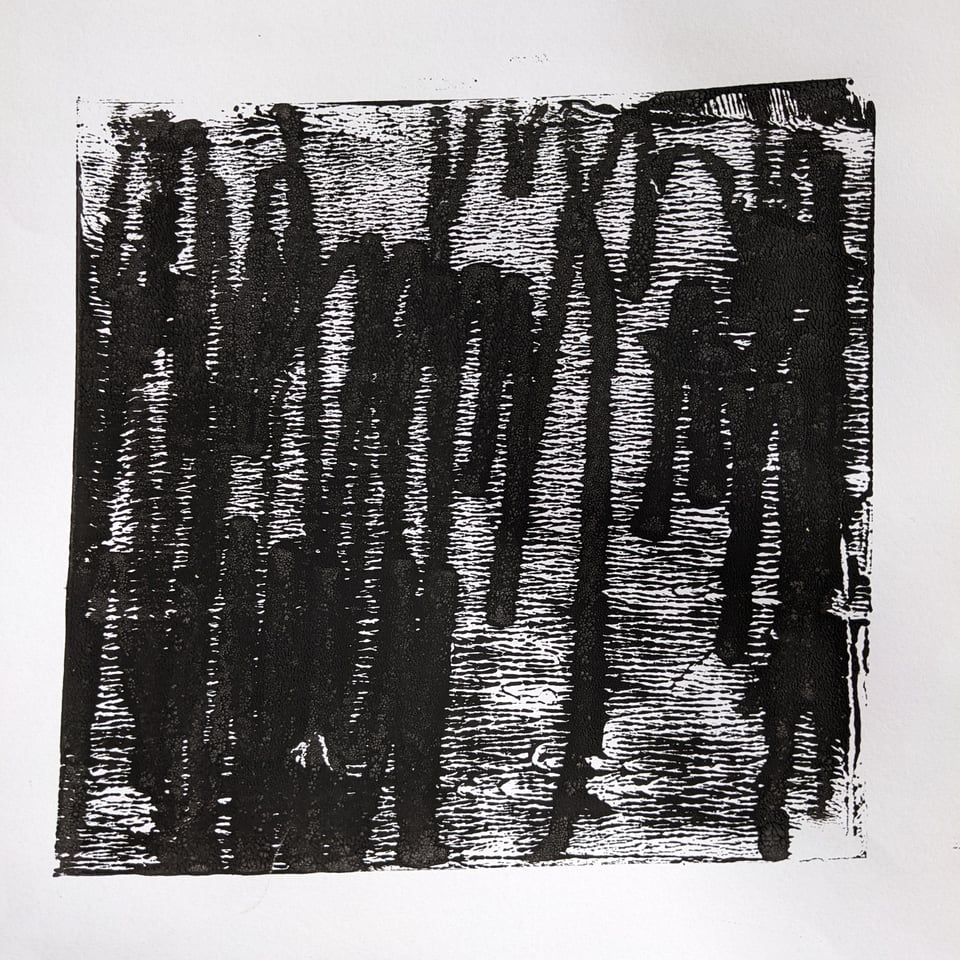
Also it represents an embrace of line, texture, and monochrome. Here are three more.
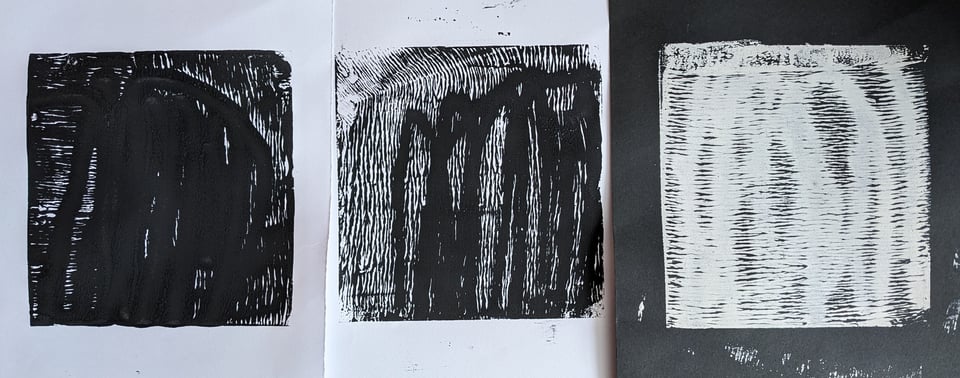
For sculpture, I knew I wanted to play with plaster and these discarded plant materials (‘small’ as in unseen, unvalued). I collected pruned branches and roots. Ideas popped in my mind. I took inspiration from Anita Groener and Magdalena Abakanowicz.
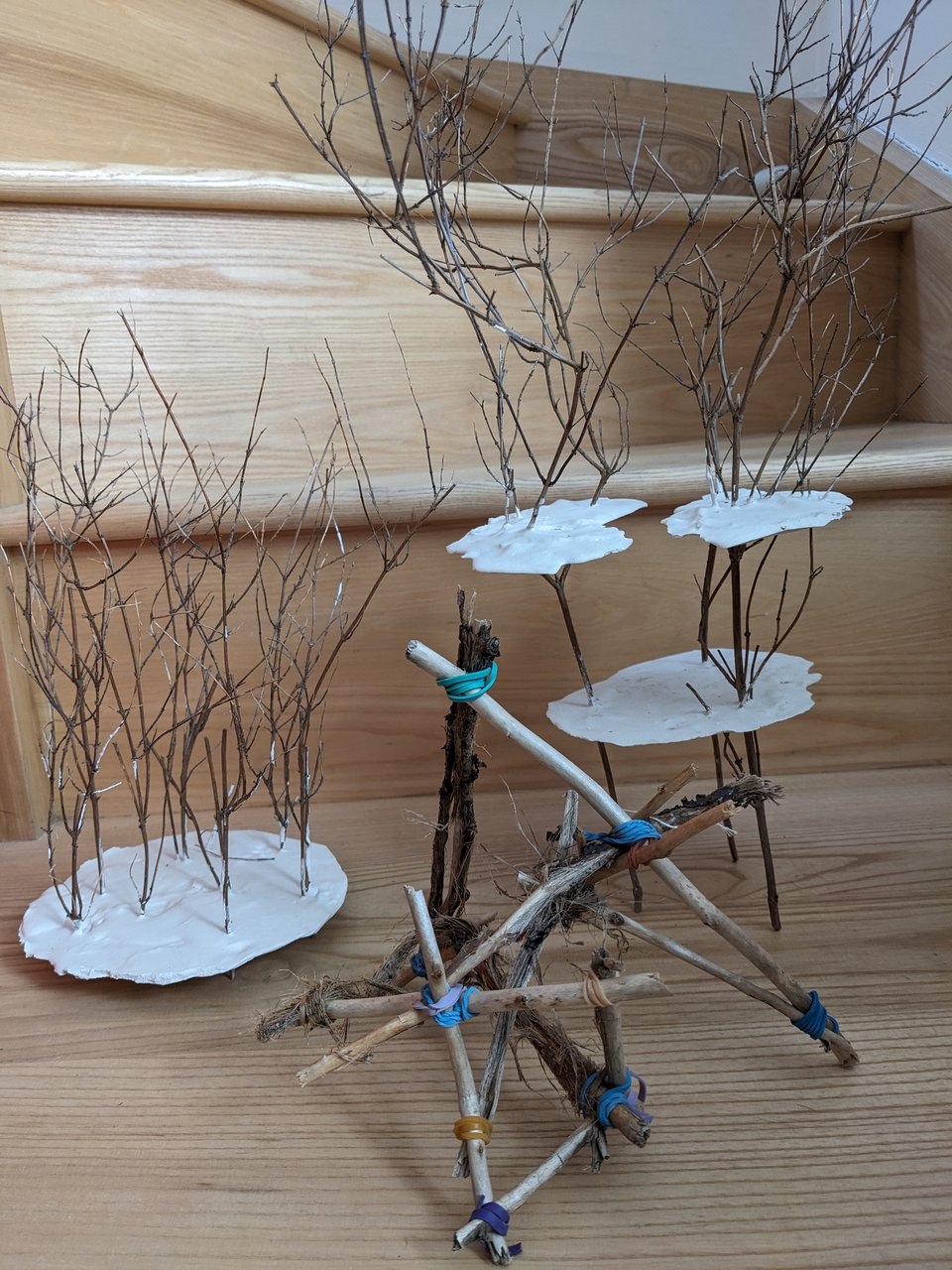
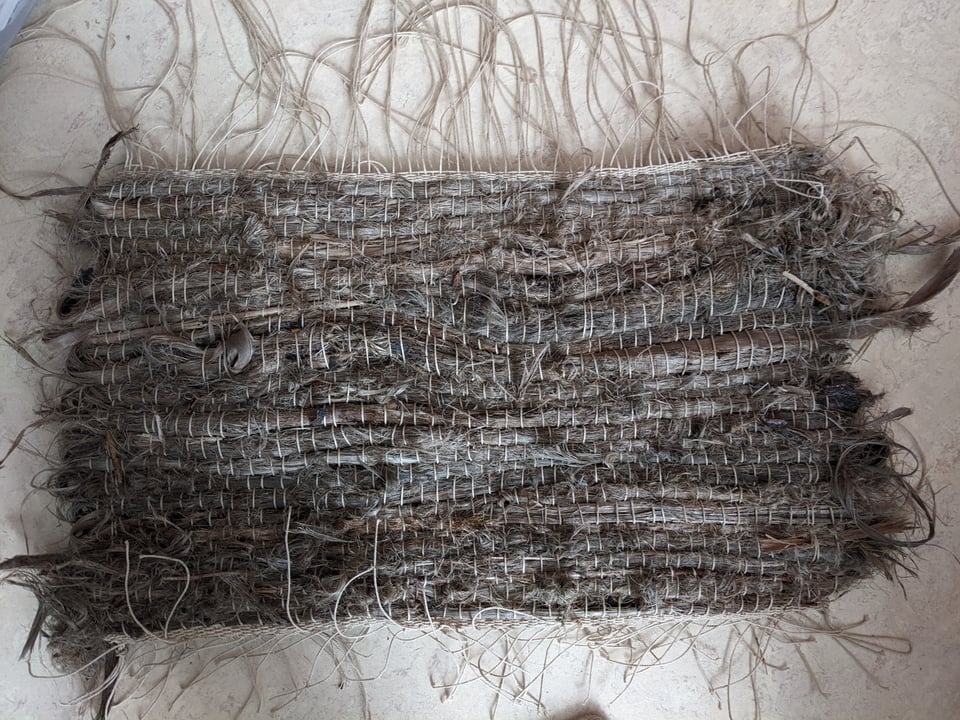
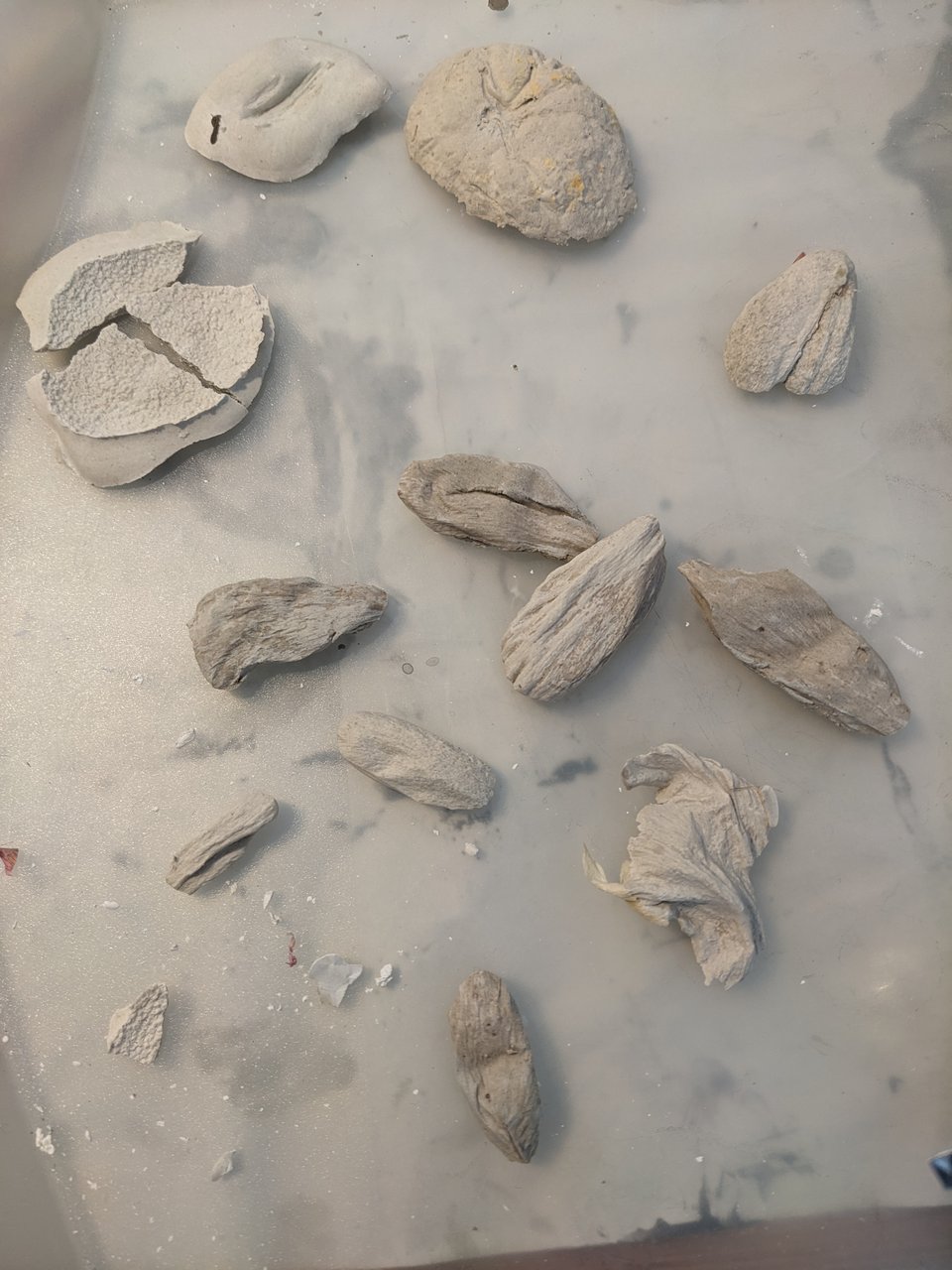
What do these have to do with my theme, ‘small’? I don’t know. I asked a tutor, and she said, you’re in this beautiful space, where you can connect threads by asking questions. And it may take years before a connection reveals itself. So while I might try to answer this question in the next module, it may take longer to connect the ideas-led practice with a materials or process-led practice.